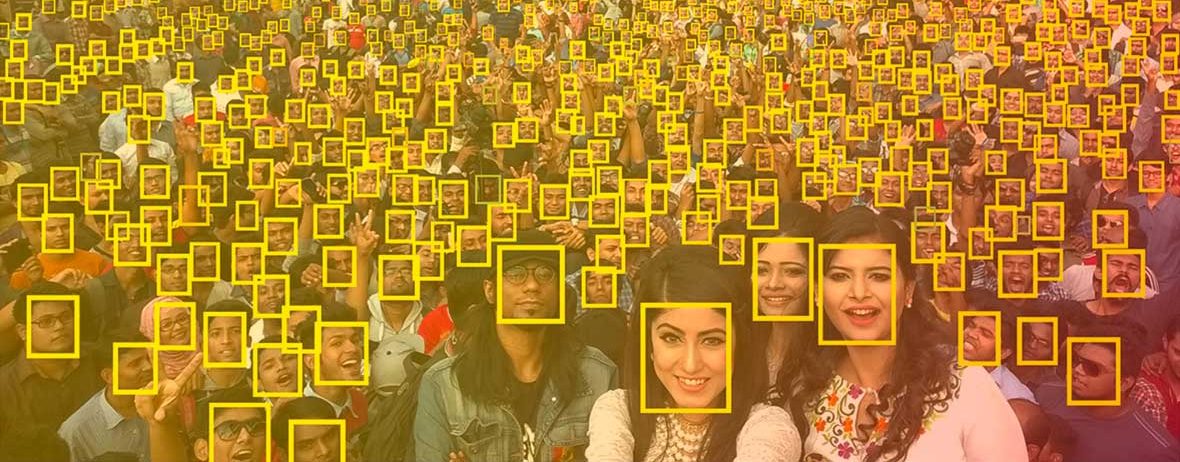“Half the money I spend on advertising is wasted. The trouble is, I don’t know which half.”
Some marketing tactics aim at maximizing the number of eyeballs seeing your message: TV ads, volume-based display advertising, batch-and-blast email marketing. These tactics offer reach without efficiency. This is Wanamaker-style marketing: you engage many people, but most of them aren’t interested.
The digital era has made possible new high-efficiency marketing tactics: you can target people who are actively searching for something (Google Adwords) or have recently expressed an interest for what you’re selling (remarketing).
The problem with high-efficiency marketing tactics is that their reach is limited. They all have a glass ceiling.
By only targeting an audience that is highly qualified based on explicit intent, you always miss out on the majority of the people who might actually be interested by your offer but never said so.
Marketers cannot meet their goals by limiting themselves to the most efficient campaigns. These campaigns have excellent revenue-per-message metrics but their total reach is insufficient and so is their total impact. Also, they rely on pre-existing demand and you need broader, less efficient campaigns to create this demand.
This is why so many ad budgets are shifting back to broad-based media buying, and this is why brands continue to send so many batch-and-blast newsletters to their customers.
But if the lesson from 15 years of Martech investment is that spam is going to stay with us forever, there is something deeply wrong
As a technologist and as an adtech/martech veteran, I’ve always been amazed by how few options existed between these two extremes.
Never is this more apparent than with Customer Marketing. When brands send campaigns to their existing customers on various channels (email, push /mobile, paid media, direct mail …), they basically follow two kind of approaches:
- Highly-targeted messages that react to customer activity (triggers, journeys) but whose volume account for less than 10% of the total messages (because there isn’t enough customer activity to react to)
- Batch-and-blast or coarsely-segmented messages that account for the remaining 90%.
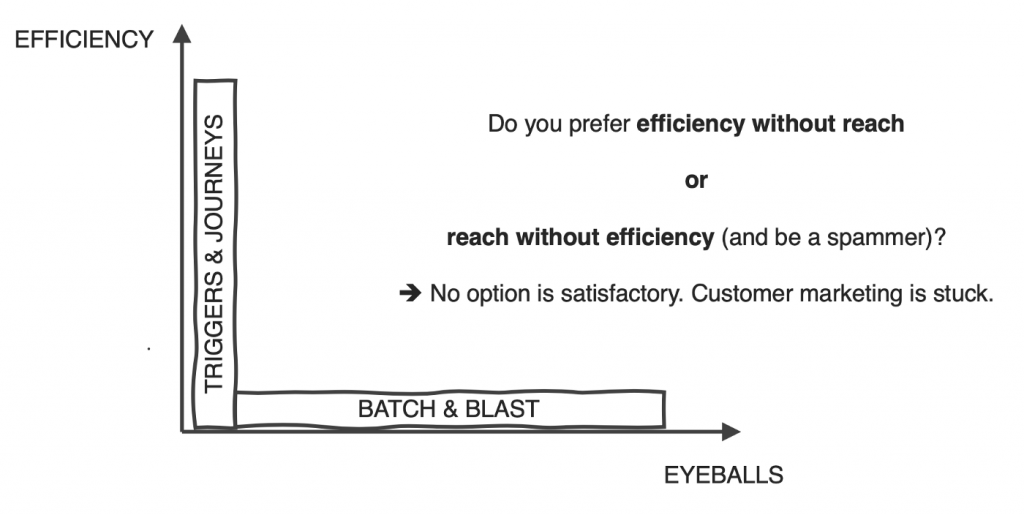
Of course there will always be a trade-off between efficiency and eyeballs, but it shouldn’t have to be binary.
In fact, there should be a full spectrum of options. The law of diminishing returns basically says that there is a maximal efficiency curve that looks like this:
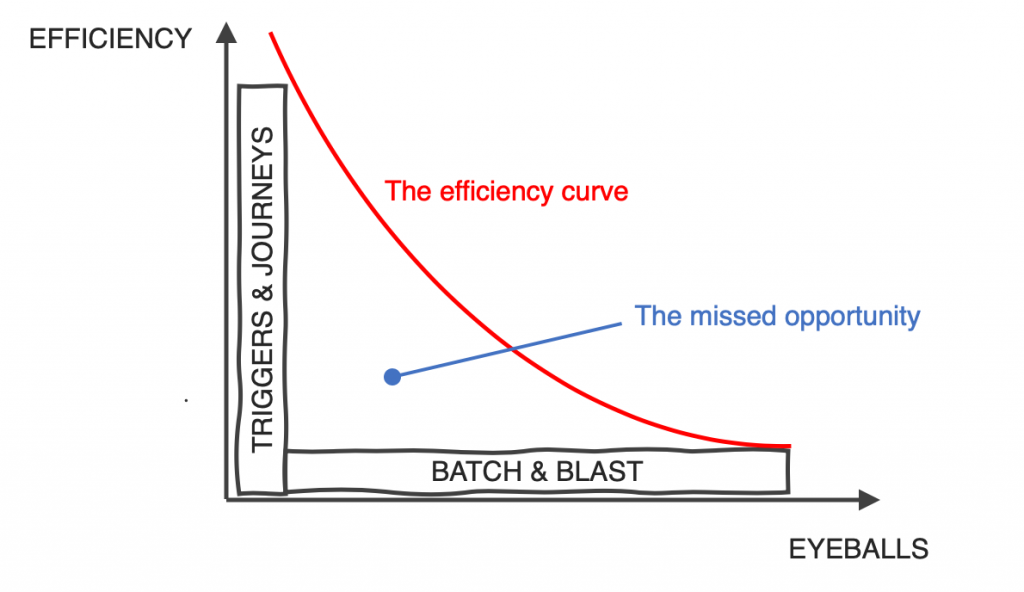
Because marketers can only access the two extreme strategies, they miss out on a massive opportunity to do much more marketing and capture much more revenue.
It is only because they face a binary choice that marketers continue to do batch-and-blast. If the whole efficiency curve were accessible, there would be no rationale for indiscriminate mass marketing. Instead, marketers would be able to sustainably scale their customer marketing programs with diversified messages targeted to right audiences.
The reason why I joined Tinyclues is that it is the first company with a technology-driven vision of how marketers can capture this opportunity
At the core of Tinyclues is a purposed-built Deep Learning technology that predicts unexpressed customer demand, based on all first-party customer data available. Like modern Marketing Automation vendors, Tinyclues approaches marketing in a data-driven and customer-centric way, but there is massive difference between Marketing Automation vendors and Tinyclues:
- Marketing Automation techniques like triggers and journeys rely on explicit customer intent. It’s great for lower-funnel campaigns aimed at optimizing conversions, but it cannot be used to generate demand.
- Tinyclues uses data in a different way. Instead of waiting for explicit customer intent, it predicts unexpressed customer demand. This prediction is done by Deep Learning, based on actual transaction patterns and all available data.
Because Deep Learning doesn’t depend on a single data point, its predictions are naturally on a spectrum: a given customer can have 12%, or 3%, or 17% chances of being interested by a given product.
By adjusting a cut-off threshold, marketers can freely select any point on the efficiency curve.
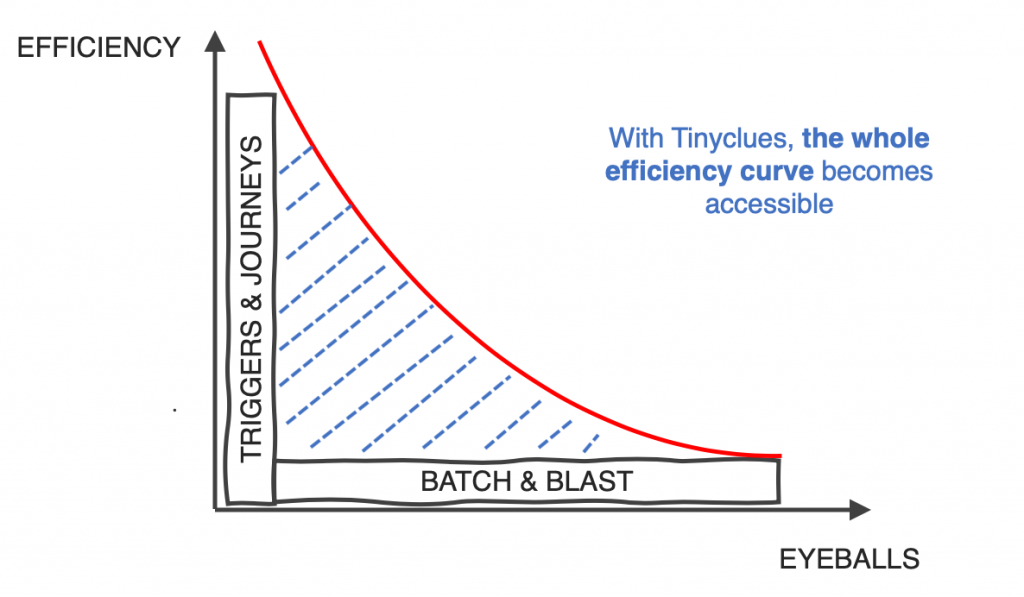
What should I be talking about to my user base ?
Often the campaign messages, also called topics, are dictated by product news, commercial priorities, inventory issues or promotions.
But one of the coolest features we’ve introduced this year addresses the situation when marketers would like to drive more revenue from their existing customers but have no idea which topics could lead to successful campaigns.
This feature is called Efficiency Map. It’s basically a high-level view of all marketing opportunities and their predicted efficiency. Here is what the it looks like for one of our clients, a multi-brand cosmetics retailer:
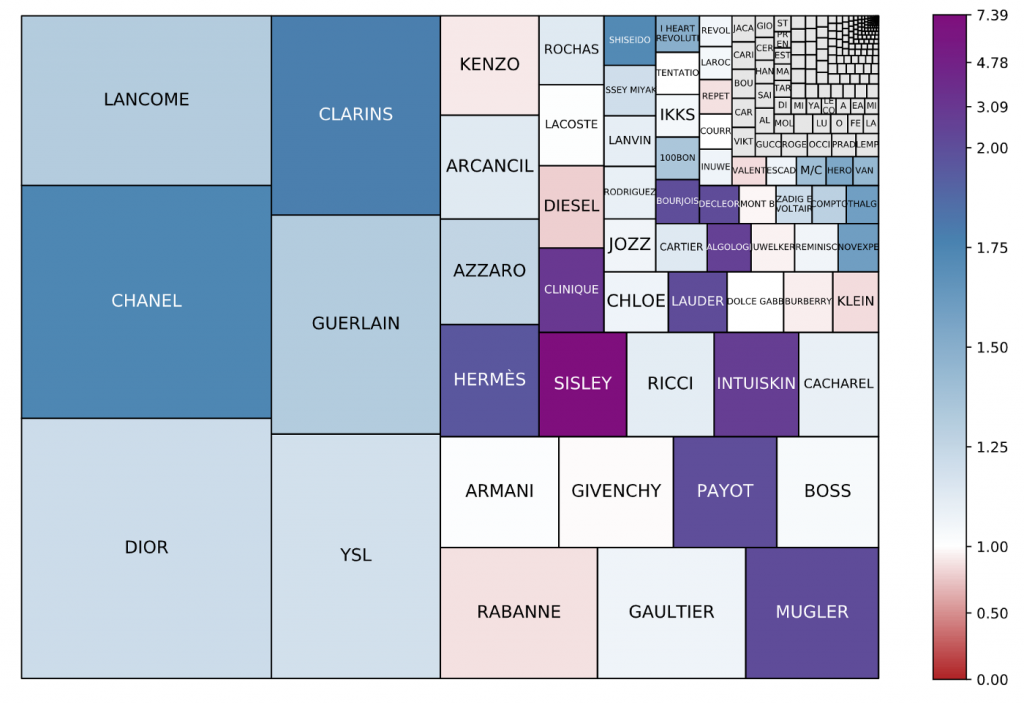
For each brand in the catalog:
- Size of the box is the revenue opportunity: how much revenue you would get by sending a batch-and-blast email. For instance, we see that Dior or Chanel are great topics for a batch-and-blast campaign
- Color of the box indicates how segmenting the brand is. For instance, Sisley is the most segmenting brand in the catalog with an index of 7.39. What it means is that you need 7.39 fewer customers to capture 80% of the revenue opportunity for this brand. For these few customers, Sisley is a very important brand. Sending these customers a Sisley campaign will result in great revenue metrics and a great customer experience and leave opportunities for many more similar campaigns to different customers.
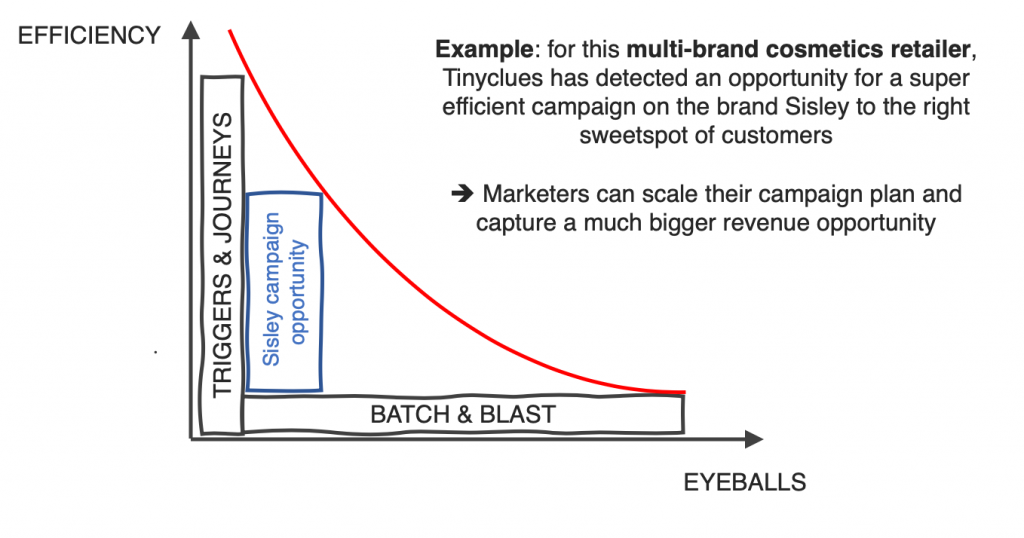
So what’s best? Efficiency or eyeballs?
The best customer marketing plan maximizes revenue and customer experience by capturing opportunities at all points of the efficiency curve.
Some messages are worth a batch and blast — but there are very few such messages.
Whenever a customer expresses intent for something, it is worth reacting to this intent with the right triggered sequence.
A new and exciting opportunity lies in between: marketing topics that will appeal to 5%, 10% or 20% of your customers, identified based on deep customer-centric insights. Customers who never expressed any explicit intent but will be happy if you send them a message. Deep Learning technology has made it possible for marketers to capture this opportunity.
Tinyclues makes it easy to operate and scalable to capture the massive opportunity to drive revenue and engagement with data-driven campaigns of intermediate reach.
The most impressive lesson of all this: marketers can do much more marketing, drive much more revenue, all this while improving customer experience metrics.
